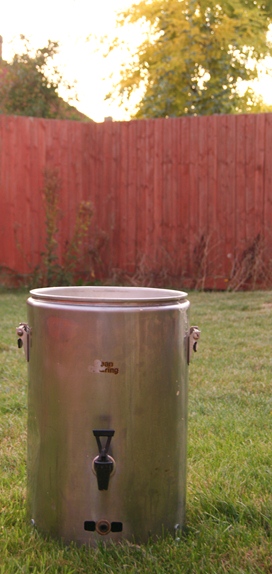 An interesting fact, which makes food festivals up to 5% more entertaining, is that our local environmental health authority requires every outlet selling hot food, regardless of where or how they do so, to have two separate sinks and a supply of hot and cold water. The idea behind this profoundly strange rule is that you then have a pot-wash sink, which is only used for pots and pans, and a hand wash sink. This prevents cross-contamination, preserves cleanliness and saves the lives of the innocent, like a dettol-wielding cleaning-batman.
An interesting fact, which makes food festivals up to 5% more entertaining, is that our local environmental health authority requires every outlet selling hot food, regardless of where or how they do so, to have two separate sinks and a supply of hot and cold water. The idea behind this profoundly strange rule is that you then have a pot-wash sink, which is only used for pots and pans, and a hand wash sink. This prevents cross-contamination, preserves cleanliness and saves the lives of the innocent, like a dettol-wielding cleaning-batman.
Thus runs the theory at any rate. In practise, I have seen a whole variety of interesting reinterpretations of the words “sink” and “hot”, many of which would possibly cause a visiting environmental health officer to go all kung-fu on their asses. In most cases though, it is not about the exciting definitions of “clean” that can be found out on the edge, in the far reaches of language, it’s about the simple existence of a sink.
The Beast, may he forever rumble, has a pot-wash sink that has been approved, blessed and sanctified by Warwickshire District Council. Imagine one of those tiny closet toilets that you cram into a house where there is no space at all, and which seem to always be much colder than every other room. Picture the sink in one of those bathrooms, then halve it. That is our pot-wash sink. As we never need to do washing up in the van, because all the equipment gets washed at the end of the shift, it has never been a problem, it merely fulfils its purpose of existing in the exact same space-time continuum as the Jabberwocky.
With this vital point checked off, the next is the provision of both hot and cold water, whereby hot constitutes at least 76°C. At this point you probably noted, correctly, that huffing on it will not get the water in question hot enough. Instead, some serious kit is necessary to create a viable cup of tea, or at the very least comply with the EHO.
Our water-boiler joined us at the same time as the van, with assurances that it was broken. We we’re a little over-excited that day and never considered enquiring further. Two months down the line we tested it, and miraculously, it lit first time, like a charm. Not only that, it sailed through its gas safe check. Mysterious, perhaps, but at the time we felt a certain sense of entitlement to a small amount of good luck, so we took it.
The food festival dawns, we open the hatch, fire up the water boiler and fill it up. It puts itself out. We investigate, and discover that the underside is leaking profusely from around the tap. Ooooh. We eventually managed to get by with a combination of a very little water in the boiler, and a pan on the stove, and order was restored until such time as we could deal with the problem. After a little investigation this appears to involve either a) an new boiler – £500 b) a new tap – £65 or c) a tube of sealant – £10. As we speak a tube of sealant is on its way to us. Not that we are chronically unlucky; I’m not a big fan of luck in the first place, but we have started making enquiries into the new boiler as well.
Please feel free to rejoice that having read this far you have achieved something few others have, namely been interested or bored enough to read almost an entire blog post about a sink and boiler. In fact I would go so far ask to request that if you have read a more interesting post about plumbing this year that you leave me a link in the comments, so that I can send the author a short note of heartfelt thanks.


